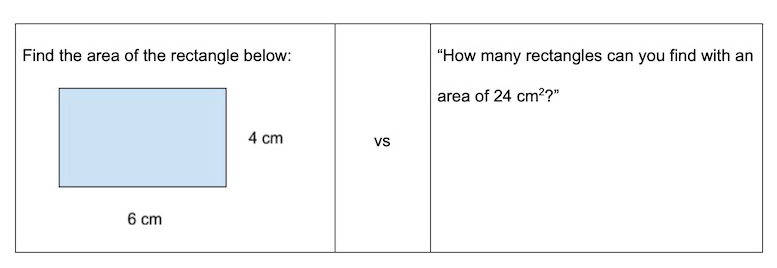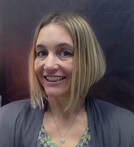|
Thanks to a recent Twitter post by Brette Garner at the University of Denver, I came across an interesting article by the NCTM (National Council of Teachers of Mathematics) published in The Mathematics Teacher. The journal title is “Effect of Certain Types of Speed Drills in Arithmetic” by A.I. Messick. The study split 272 fourth and fifth graders into two groups while teaching addition: one focused on speed and the other focused on accuracy. Here are a few of the conclusions: (1) Accuracy is more important than speed, (2) From the viewpoint of speed, it makes little difference which is emphasized, speed or accuracy, (3) From the viewpoint of accuracy, it is much better to emphasize accuracy, and (4) In teaching addition to pupils of the fourth and fifth grades of the elementary schools it is better to emphasize accuracy rather than speed. Given recent work by Professor Jo Boaler and her group at Stanford and the NCTM’s definition of math fluency as being accurate, flexible, and efficient with computations, research concluding that teaching accuracy over speed does not come as a surprise. What I did find surprising; however, is that this article was published in 1926. Not 1996, not 2006 or even 2016, but 1926. Since 1926, how many thousands of students have suffered through timed math often known as “mad minutes” that focus on speed? How many students were discouraged from studying engineering, science, medicine, or other disciplines because they thought that being good at math meant memorizing procedures and regurgitating facts quickly? How many scientists did we fail to create since 1926 because memorizing mathematical procedures was a gatekeeper to further study of all sciences? But, wait. 8 x 7 is always 56, right? You just have to know that quickly. If you can’t recall this immediately, then how can you possibly go on to study fractions or solve differential equations? I would argue that knowing how to figure out 8 x 7 flexibly, accurately, and efficiently is much more meaningful than rapid recall or memorization. When I was a high school teacher, I found too many students who could not answer questions like, “What is 8 x 7?” When students are taught their times tables through “mad minutes” or other techniques that rely on speed, they might remember them in the short term, but will not be able to recall them years later. In particular, many high schoolers struggled to recall the 8 times tables. When I would ask them the answer to 8 x 7 they would blurt out 52, 58, or some other incorrect answer. When I said, ”no,” they usually would look at me with a puzzled look, shrug their shoulders and say, “Hmmmm...I don’t know,” or reach for their calculator. Instead of giving up or relying on technology for simple facts, I want to live in a society of people who, when they forget a simple fact like 8 x 7, have another way to figure it out efficiently. One possible scenario: I can’t recall 8 x 7, but I know that 10 x 7 is 70 and I need to take away 2 x 7 which is 14, leaving me with 56. So, 8 x 7 is 56. There are multiple other ways to answer this question without using pencil & paper or relying on a calculator. This is true mental math because it relies on problem-solving and making connections between various numbers and operations. Regrettably, many people equate mental math to “mad minutes” and rapid regurgitation of facts. A student who understands multiple ways to calculate 8 x 7 exhibits true number sense. If we rely solely on rote procedures and memorization, we produce students and adults who only have one way to approach a question like 8 x 7. When their memory fails, they are at a loss at what to do to find the answer. Making Math Moments that Matter, a podcast and wonderful website curated by Kyle Pearce & John Orr, recently Tweeted that “teaching math exclusively from your textbook is like teaching with a bag over your head.” That statement really resonates with me because when teachers teach solely from a text, they are teaching a very one dimensional view of mathematics. What other types of activities might students engage with to learn the content? What questions might they come with on their own if they are given fewer prompts & procedures to mimic? What technology currently exists that might not have been available when the textbook was published? Given what we know about current best practices in math, how can teachers lift the paper bags off of their heads? To explore these ideas, I reflect back upon my journey as a high school math teacher. When I first started teaching, I was very much a follower of the textbook and had that paper bag firmly planted over my head. In fact, I remember the first few weeks at my first international school in Caracas in 1999. The book order was delayed and had not been delivered. How could I teach IB math without a textbook? The mere thought paralyzed me. I thought I was a good teacher because I was good at explaining procedures found in the textbooks to my students. If I made my explanations clear in their delivery, then I was doing my job. I had missed the whole point by focusing on what I was doing rather than on what students are learning. As a mathematics consultant, I now support teachers today in discovering how math can be learned through applications and problem solving. As a new teacher, I only gave problem-solving lip service. My early students solved the word problems found at the end of the chapter and did very little true problem solving. What changed in my thinking and in my practice? How did I remove the paper bag from my head? I had to learn to let go by starting small and trusting that my students would still learn the necessary content. This was not easy for me to do and it can be very scary. I loved being the sage on the stage. I was comfortable there and received positive feedback from students who told me they enjoyed my math classes. Looking back on my early days as a teacher, I wasn't teaching much mathematics. I was teaching tricks, procedures, and “how to’s.” I was an expert at helping students make sense of textbook problems, which meant explaining procedures and tricks to them clearly. What I wasn’t doing was creating experiences for my students to be true problem-solvers. How can we provide all students the opportunity to problem-solve and make meaning of the mathematics they are learning? How can teachers shift their math instruction? I offer three suggestions:
Starting small is often one of the most difficult things for educators to wrap our heads around. If there is a better way of doing things, then I need to throw out the textbook tomorrow, find all my own resources based on the standards, and spend five hours preparing for every lesson. No. Instead, take one thing from one lesson and change it. Consider one learning outcome from a lesson and find an interesting problem (lots of places to start here) that involves more student thinking and less teacher direction. If you’ve never done this before, it can be very hard to let go. Note: you don’t have to make up your own problems at the start, you can try an open middle or youcubed problem. Here is an example from Jo Boaler: Both questions explore the concept of area. But the second allows for student exploration, creativity, and conversations about what area means.
Secondly, join a PLN with other educators who are also interested in teaching math differently. They might be at your school or across the globe. It might be through a Critical Friends Group or through work with an instructional coach. There is nothing better than being able to share a success, no matter how small, with supportive colleagues. Twitter is a great place to start. I learn so much on Twitter from the math and education people whom I follow. There is a plethora of information out there and you can be selective over what pops up on your feed. You might find a fellow teacher who lives in a different country, but with whom you connect and share great ideas. There are Facebook groups devoted to teaching math. Don't be afraid to put yourself out there virtually or in person. Finally, inform your students about what you are doing. If they have been taught traditionally for years, they are used to sitting and getting the information from the sage on the stage. This type of passive learning is much easier than having to engage in problem solving. If they don’t understand why you are doing things differently and prepare them for it, there might be unnecessary pushback. Sometimes, when using a “student-as-worker, teacher-as-coach” approach to instruction, students assume you don’t know the answers. If you tell them at the start that you do in fact know the answers, I find they are more willing to dig into the problems. I used to tell my students, “Yes, I know the answers to the questions you are working on. No, I’m not going to tell you even though I know.” I also shared this information during parents’ night. I had very little parent pushback because I invited them into the conversation and gave them the resources to support their children outside of the classroom. If their child’s math class looks different, it’s our job as educators to help parents navigate this. If not, it can lead to viral misinformation, like the father who wrote a check using Common Core math. My journey from teacher of procedures, to teacher of mathematics, to mathematics consultant has not been linear. In fact, it has been anything but that. I am continually growing and learning as I continue along this path. I enjoy supporting teachers as they find their own paths to teaching more of the beauty of mathematics and fewer procedures. I became a math consultant because I am passionate about empowering educators with the mathematical expertise needed to inspire the problem solvers of the future. I love sharing my triumphs and failures in a vulnerable way to help both beginning and experienced teachers grow. Is there one thing you’d like to do differently in your math classroom? Try it today. Take that first step and let me know how it goes.
0 Comments
|
Nicole FedioMathematics Consultant at Mathematique Archives
February 2020
Categories |


 RSS Feed
RSS Feed
